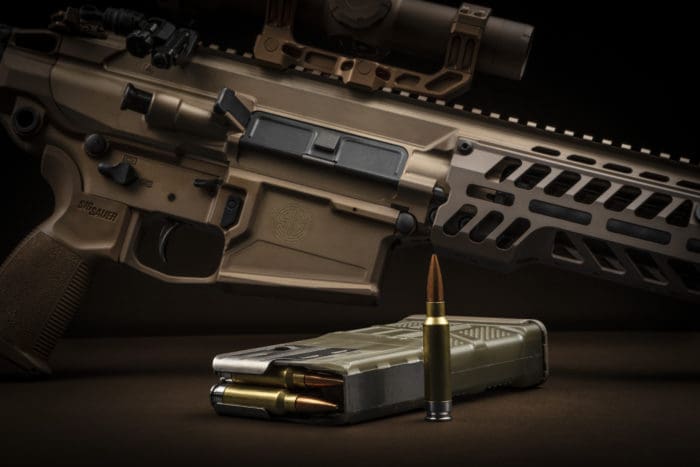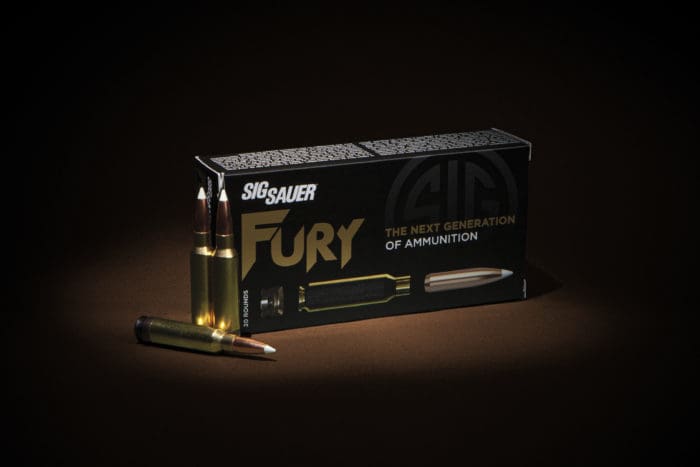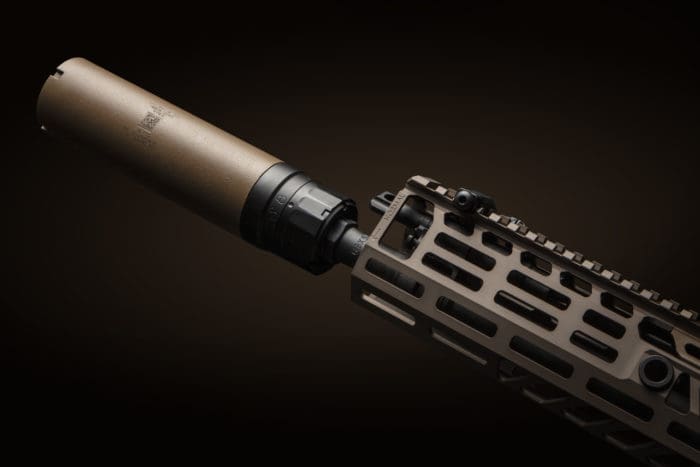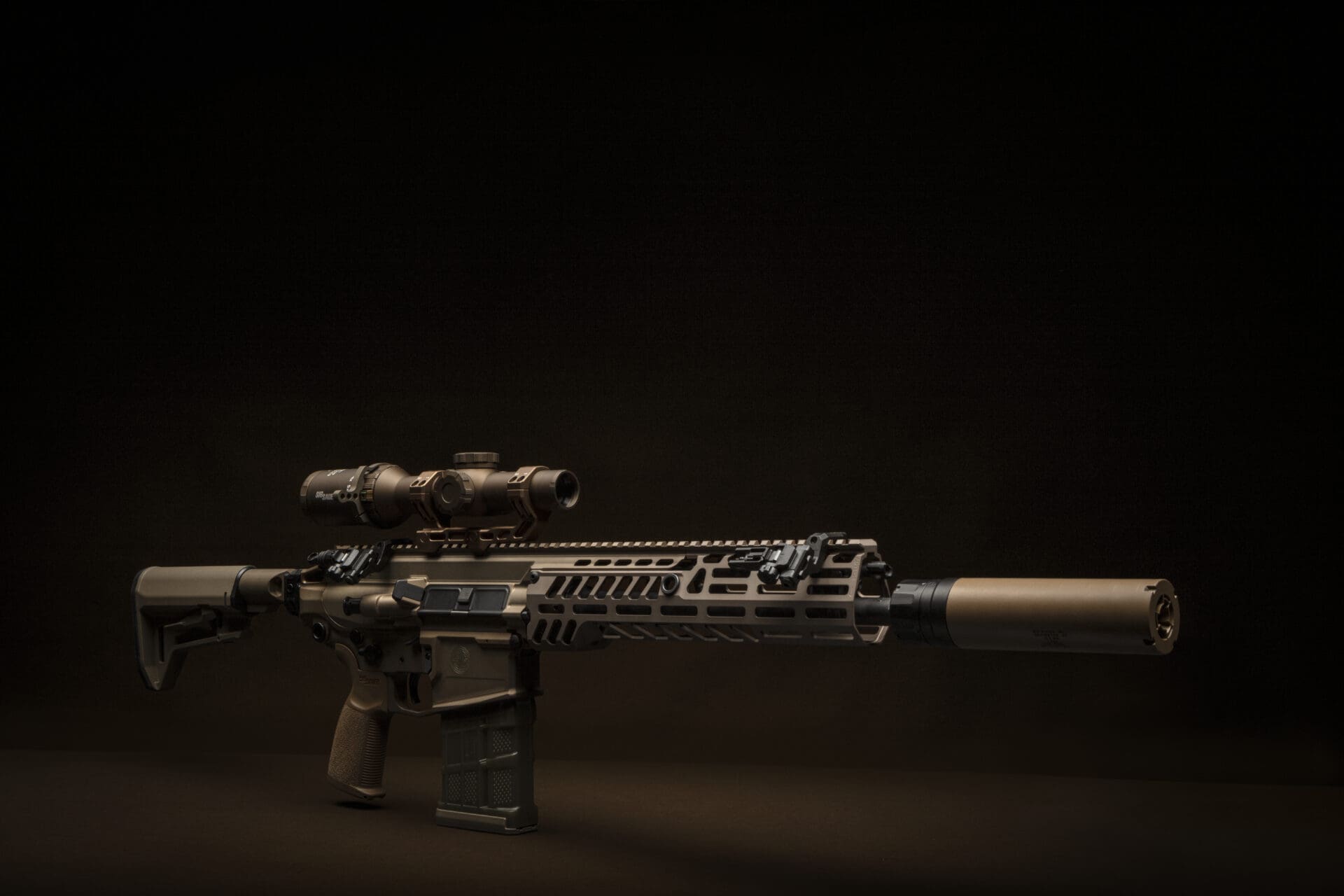From SIG . . .
SIG SAUER is proud to announce the official expansion of the MCX series of rifles with the new MCX-SPEAR chambered in 277 SIG FURY. The MCX-SPEAR was developed with direct input from U.S. warfighters to provide more power, distance, and accuracy to replace the current M4 rifle platform. The MCX-SPEAR is now the most innovative and advanced AR platform in the world.

“This is a rare opportunity for passionate consumers to own a piece of history,” began Ron Cohen, President & CEO, SIG SAUER, Inc. “This first production run MCX-SPEAR, and all of the revolutionary technology behind its development, is being offered to the commercial market in a configuration that is a near match to our NGSW-R submission. Further, this is the only rifle submission to the program that is designed and engineered in the United States by a company with the manufacturing scale and proven adherence to military-grade quality requirements – which is a tremendous source of pride for everyone at SIG SAUER.”

The MCX-SPEAR is an adaptable multi-caliber rifle (277 SIG FURY, 6.5 Creedmoor, 7.62 NATO, with barrel change) featuring rear and side non-reciprocating charging handles, 6-position folding stock, ambidextrous fire control, bolt-catch, and mag release, 2-stage match trigger, 2-position adjustable gas piston, a lightened free-float M-LOK™ handguard, a full-length picatinny rail, and ships with (2) 20-round magazines.

“The revolutionary SIG FURY ammunition is the most technically advanced leap in smalls arms ammunition in over 150 years, this turns your intermediate rifle platform into magnum performance without the added weight or length while still using 20-round magazines,” added Cohen.
The 277 SIG FURY ammunition is the commercial variant of the 6.8 x 51 hybrid military round available in the hybrid case technology submitted to the U.S. Army NGSW program. Also available is a 277 SIG FURY FMJ traditional cartridge round

“The final component of this special-edition offering includes the SLX Suppressor. The design of the SLX suppressor is optimized to dramatically reduce harmful toxic backflow and features our patented QD attach/detach system making installation of the suppressor a game-changing level of ease,” said Cohen.
The SIG SAUER SLX Series of suppressors are designed to drastically reduce toxic fume inhalation by the end-user and sound reduction and are available commercially for 5.56, 7.62 NATO, and SIG FURY 277 calibers. The SLX suppressors feature a monolithic core construction in Inconel, an internal multi-flow path to exhaust gases at a higher rate resulting in lower toxic fume inhalation, a sound reducing baffle design, a flash reducing end cap, and are available with either the new Clutch-LOK QD mounting system for easy install and removal that offers an intuitive tactile locking ring with infinite radial locking positions, or direct thread.
Weight (w/magazine): 8.38 lbs.
SIG FURY Ammunition:
277 SIG FURY 135 Gr FMJ Bullet – Standard Brass Case
277 SIG FURY Elite Series Accubond 150 Gr Nosler Accubond Bullet – Hybrid Brass/Stainless Steel Case
SLX Suppressor:
Finish: High Temp Cerakote
Core Material: Inconel
Diameter: 1.67in.Overall Length: 5.24in./7.49in.
Weight: 8.8oz -19.4oz.
Attachment Type: Clutch-LOK QD or Direct Thread
The MCX-SPEAR, 277 SIG FURY Hybrid Ammunition, and SLX Series Suppressors are now shipping and available at select commercial retailers. To learn more about the SIG SAUER submission to the U.S. Army’s Next Generation Squad Weapons Program or the products visit sigsauer.com.





This week on Forgotten Weapons…
Essentially magnum cartridge performance from the 7.62 x 51 case…and it fits AR’ish sized military form-factor specifications.
The all brass case is $34’ish per 20 rds from Sig and the Hybrid is $80 per 20 rds…both are out of stock.
Like to shoot one…probably not purchasing one…I already have too many orphan cartridges to support.
Very interesting but unless Big Army adopts it not sure it will supplant conventional 5.56 carbines. For your average citizen or even police officer it doesn’t seem to offer enough to justify the cost.
It’s heavy as well.
“military-grade quality requirements”
I’ve had two pistols and two optics sent back to Sig for QC failures.
I don’t know a single person who’s had a Sig Optic that hasn’t had to go back for warranty service at some point. Note: These optics are all made in China by our enemies.
They beta-test their products on the consumers.
Not to dog-pile on Sig, but my friend and shooting partner purchased a Sig 365XL with a red dot and he had to return his for work. He eventually took it to a local gunsmith after not being satisfied with the repairs at Sig.
@busybeef
I’ve got several Sig optics and have beat the daylights out them and abused them. Most of them show the wear, scratches and dings. I’ve accidentally banged them on things, dropped them onto concrete, left them out in the back of the pick up and they bounced around for a few days before I realized it was there. Left them out in the snow and ice and then chipped the ice of them, and sunlight in temps of 100 degrees. I use a lot of quick-detach mounts, that’s one of the first things I do with Sig optics, I find a quick detach mount for it and swap0 out the factory mount (nothing wrong with the factory mount though). I’m frequently swapping optics around to try out on different rifles, or loan one to someone. Sometimes I take one off and lay it down and forget its there while I shoot then walk away leaving it.
One of them stayed at the bottom of a shallow pond we have on the back of the property until we drained it, stayed there for two winters before we had the pond drained. Found it resting on a big rock at the bottom when they drained all the water, turned it on and it worked fine. Cleaned it up, I still use it today and never had a problem with it. Never had a problem with any of my Sig optics, never had one quit on me and never had one that needed to go back to Sig.
Sig Sauer optics are manufactured in different countries in Asia – these are Japan, Philippines, and sometimes China. The Sig optics division R&D, design, QC, and service operations are in Wilsonville Oregon.
I have a SIG Sauer 4-12x44AO scope on my Ruger Precision Rimfire. Really good scope for the price ($200 AU). I bought it on a clearance sale. I like being able to adjust the focus for rimfire distances (25, 35, 50, 100m) and the adjustments take exactly like my Leupold scopes do.
My Romeos perform A+
From Sig’s website:
Grain Weight 130 gr
Muzzle Velocity @100 yds [16in 1750] [24in 3000]
Oops. No way it loses that much velocity.
Yeah, looks like a typo–more like 2750?
I don’t think there is enough performance improvement to justify the expense of replacing the M4. Inside an actual engagement distance, that is where we need to see the proof.
As a soldier since 1986, I don’t see our troops having enough time and ammunition to train for proficiency on the current weapons. Changing weapons will not change the lack of support and time spent on marksmanship and weapons proficiency.
If I were spending our money, I would put a decent optic on the M4 and have every soldier shooting for a week every quarter. Not qualification. I want them shooting non-standard ranges and practical scenarios.
But that doesn’t generate a nice bonus for everyone involved in the acquisition process.
Cynical viewpoint…but, true dat!
(you forgot those meaningless, well-paid “VP’s” and “consultancy’s” that retiring O-6’s and above are rewarded with so frequently.)
If you ever watched Farrell’s takedown of the great Miami 1986 shootout you realize the problem wasn’t firepower, it was training. But I guess it was it easier to invest in guns than training. An M1 Garand with .308 is technically capable out to 750-800 yds, but the standard issue rifle with standard issue ammo and, most importantly, standard issue GI isn’t hitting the broad side of a barn at 800 yds. If our new standard of infantry fighting is 750 yds, we don’t need a new rifle, we need hours of training on the range. Or, more realistically, at a half mile battle distance, you want drones, tanks, howitzers and air support. But $5,000 rifles are pretty cool…..
Try $8000 for civilians. I guess they are trying to recover their R&D off of what likely will be a low volume weapon.
I have had several members of our church security team watch that particular video. He does a very good job at bringing that entire topic full circle.
But for a $1 eyeglass strap, the entire gunfight would have ended with no FBI agents killed or injured.
Any information on pricing? And will there be a 16-18″ versions for even more velocity?
Oh, and when will they come out with the gen2 (or rather gen 1.2.21-2b knowing the Sig designations) that actually works because it’s no longer in beta testing?
MSRP $7999.
This is an abject disaster. When you’re reducing the size of your force this is not the time to also reduce the amount of ammo that they carry. Also the added recoil will be a detriment to troop accuracy. This is as bad as when the Army took the 7th cavalry’s Spencer repeaters and gave them single shot Springfield’s.
It would have worked if only the Native Americans had chosen to fight in a European model of volley fire at maximum range. Instead, they chose the dastardly tactic of swarming and overwhelming the cavalrymen with Custer. It would seem their only goal was to defeat their enemy.
Never assume the enemy is going to fight the way you expect.
Fun fact: the .277 FURY has an operating pressure of around 80,000 PSI.
Wasn’t some of the design intended to help penetrate lower end body armor with non tungsten rounds?
Looks like the MCX Spear was taken down, error – 404 page not found. Guess Sig didn’t like the press reports last month.
https://www.sigsauer.com/mcx-spear.html
Comments are closed.